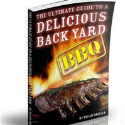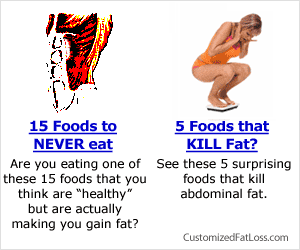Pre Wedding Diet
The key is to develop a pre-wedding diet that works for you and your lifestyle. Always take into account your age and body type, you are an apple, pear and Chili Pepper. However, regardless of our type, we are all individuals. So, your bridal weight loss plan, a personalized diet, a diet that meets your needs. A healthy, progressive pre wedding diet ensures long-term success!
The best thing to do is eat sensibly, eating good healthy nutritious foods to make you feel energetic. Eat lots of fruits and vegetables and make sure you eat breakfast.
Avoid ‘junk food’, such as fatty fast food, chips, donuts, chocolate bars and pop. Have three regular meals a day. In the middle of the afternoon, a light or low calorie snack, like fresh fruit or some crackers with low-fat cheese. This will maintain your energy level and control your appetite before dinner.
Do not skip meals. Skipping breakfast or lunch and will only cause your body to slow down, which is your body will not burn as much energy as you skip meals. Therefore, you tend to gain weight and that sense of fatigue so commonly experienced by people who skip meals or who try to lose weight quickly to get.
Do not start your pre wedding diet at the last minute. The best advice I got when I was to start losing weight today. Too many brides do their important wedding arrangements, but forgot to look after themselves and they can lose those extra pounds think closer to the big day. Take the pressure on yourself and start once you get engaged. This is you in so many ways, one is that you do not have to keep going back to Maggie Sottero dress your S5271 Catherine made smaller, and you will not be the bride cry on her big day say “if only”.
Your wedding day will be great, maybe even great. Your photos are beautiful, and your guests will remember for years to come. Losing weight the right way, at a pace you can maintain and keep it off. By throwing a few pounds, you may be an even more sensational knockout at your wedding, do it wisely.
If you want to find more Wedding photos, then visit martha vineyard wedding photography.
Paleolithic Diet
Paleolithic Diet Paleolithic Men and Women. Paleolithic people lived from caves to cave. They were a tribe of people constantly moving. Their mobility was based on survival always looking for shelter and food. Paleolithic people had not discovered planting, animals had not been domesticated and fire was not controlled. Not being able to plant food resulted in the Caveman always traveling looking for food. Their diet consisted of lean meat, wild birds, wild poultry, bird eggs, fresh vegetables, fresh fruits, roots, leaves, seeds, nuts and herbs. Keep in mind for meat Caveman had to capture and kill wild animals. Causes of death were child birth, animal threats and infections. Encyclopedia Britannica 1961 estimated that Upper Paleolithic life expectancy was 33 years old. The Paleolithic period is pre-agriculture. The period after the Paleolithic period is the Neolithic period. Man planted food, pottery was invented and had controlled fire invented for warmth and cooking. In the Neolithic period man became stationary. They could grow their own food. The caveman’s diet did not consist of potatoes, wheat, beans, peas or legumes. Raw these food content toxins. In the Neolithic period cooking these foods killed most of the toxins making them edible and extending man’s diet. Curiously, Neolithic life expectancy was 20 years old. The Paleolithic men and women had to be physically fit and healthy for survival. Their fitness and health was a result of exercise and diet. Additionally, some may concluded eating free of non toxic foods.
Toxins in potatoes, grains, peas and beans are called anti-nutrients. Uncooked the anti-nutrients are:
Enzyme Blockers “protease inhibitors”
Lectins
Glycoalkaloids toxin contented in potatoes. When cooked the glycoalkaloid is not destroyed.
When foods cooked enzyme blockers and lectins toxins make foods edible but toxins not completely destroyed.
Hunter Gatherers: Term referring to the Paleolithic man because he was always hunting and gathering. Hunting for animals, wild game and poultry. The battle between Paleolithic man and wild animals was a situation of kill or be killed. Battles resulted in some Cavemen being killed or severely injured. Dead animals had several uses for food, skins and fur was used for shelter and clothes. Bones used as weapons. Skins and fur were not sanitized and remained blood soaked or had traces of blood. The Paleo people’s diet was subject to the seasons. The best seasons were spring and summer. Fresh vegetables, fruits, roots, tree leaves, nuts and seeds were plentiful. Fresh bird egg’s were stolen from bird’s nest and eaten raw. Food maintenance was time sensitive and subject to rot. There were no food preservatives or refrigeration. Paleo men realized only a certain amount of food to be gathered to prevent waste.
Stone-Age: Caveman made their tools and weapons with stones. Materials were wood from trees, tree branches, animal bones, animal antler, animal teeth, shells and other stones. Stones were used for hammering and chiseling.
Modern society has most of the advantages. There is mass farming. Foods contain pesticides, additives and preservatives all have negative health consequences: high blood pressure, heart diseases, obesity, diabetes, skin diseases, allergies and etc.
These primal people were lean, physically fit and healthy. They had to be fit to survive the elements. The Paleolithic people have left Modern Man the wisdom of the Paleolithic Diet. Weight loss, weight maintenance, increase energy, anti-toxic diet, improves health and maintains healthy longevity. Eat and live healthy.
Over 370 Paleolithic Recipes
Order: Paleolithic Recipe Cookbooks For Favorite Paleo Recipe Secrets What is Paleo Diet?
More Diet Articles
Categories: Diet Tags: Diet, Paleolithic
Diet Herbs
I housands of herbs are available worldwide for a dizzying array of diseases and disorders. And consumers are sold on them: A recent survey found that one in three people spends an average of $ 54 a year on herbal remedies.
Without question, herbs do work wonders in treating many illnesses and improving health. But herbal medicine has a far less effective track record when it comes to weight control. Only one herb ephedra is believed to directly promote fat-burning, but its dangerous side effects make it unsafe and unwise to use.
There is one particular aspect of your weight you can control to some extent by supplementing with herbs, and that is water weight. Let’s say you weigh 150 pounds. About ninety of those pounds are water; thirty are fat. The rest is lean tissue muscles, organs, and bones. So normally, most of your body weight is water. Sometimes you may retain water. You look and feel fat, even though you may have lost a significant amount of body fat. Some days, you can’t even fit into clothes you wore the week before!
Puffiness does masquerade as pudge. Disheartening and uncomfortable, periodic bouts of water retention, medically known as edema, may be the result of any number of factors: excess sodium in the diet, food allergies, premenstrual changes, hormone imbalances, a hot climate, and kidney or heart disease. If you’re chronically plagued by edema, have it checked out by your doctor.
You can lose some of that fluid by taking a prescription “water pill” (diuretic) or by forcing yourself to sweat in a sauna or steam bath. Neither is a good idea, though, because they can lead to life-threatening dehydration and mineral imbalances.
Some herbs, however, may offer a gentler solution. Most of the herbs promoted for weight loss are diuretics agents that cause the kidneys to draw extra water from the blood into the urine and stimulate the excretion of water. This action promotes temporary water loss. There’s certainly nothing wrong with regulating water weight by using herbs, as long as you use them on a short-term basis and with the full knowledge of your physician. In most cases, herbal diuretics are safer than their prescription counterparts. But long-term use of either can flush vital nutrients from the body and cause irreparable harm.
Other weight-loss herbs are really nothing more than laxatives, which also force water from the body. It’s much healthier to follow a high-fiber diet and drink plenty of pure water daily than to rely on laxatives for elimination. Prolonged used of laxatives and diuretics, even natural ones, can lead to dependence and serious health problems.
What follows is a discussion of forty-three herbs commonly promoted as diet aids. In most cases, these herbs are found in natural weight-loss supplements in minute amounts, mainly as fillers. In others, they are single-or multiherb formulas, available as capsules, compressed tablets, liquids, extracts, or teas. It’s a good practice to read the list of ingredients on any natural weight-loss supplement carefully. The information below will help you make informed decisions about specific products.
Georgiy Kharchenko – herbal products, caffeine weight loss, fastin weight loss pills






-SMALL.gif)
